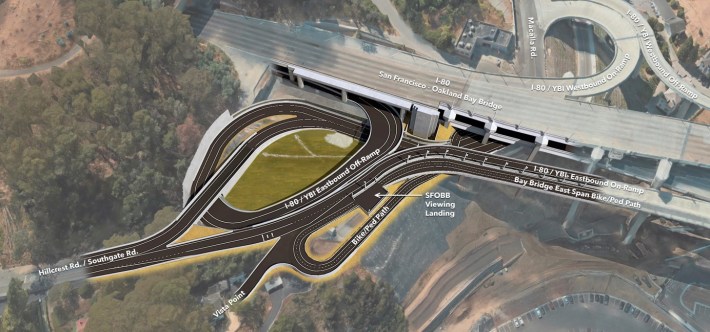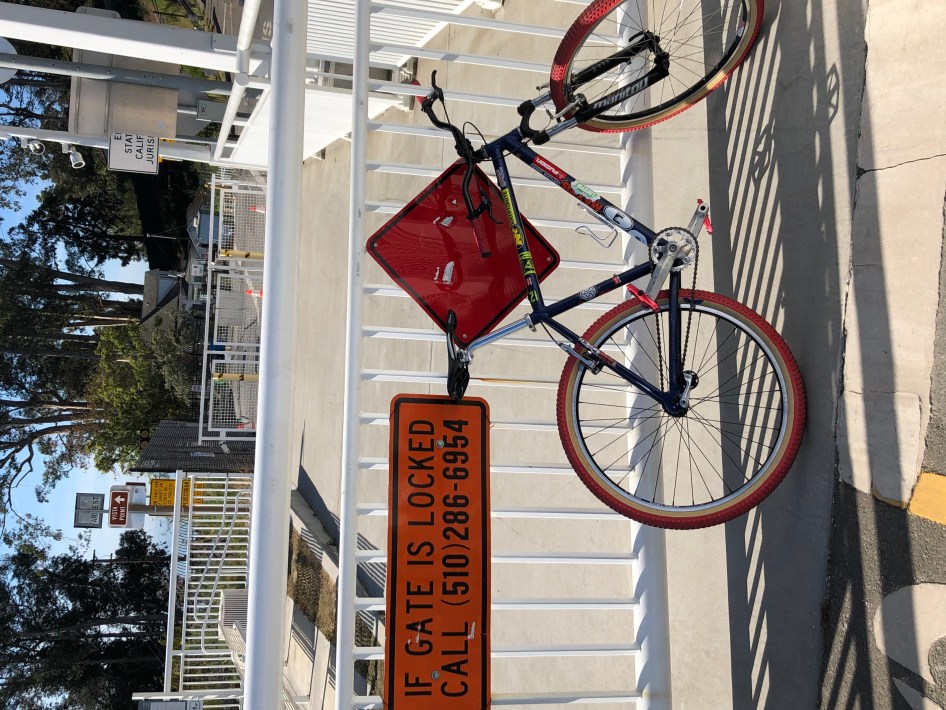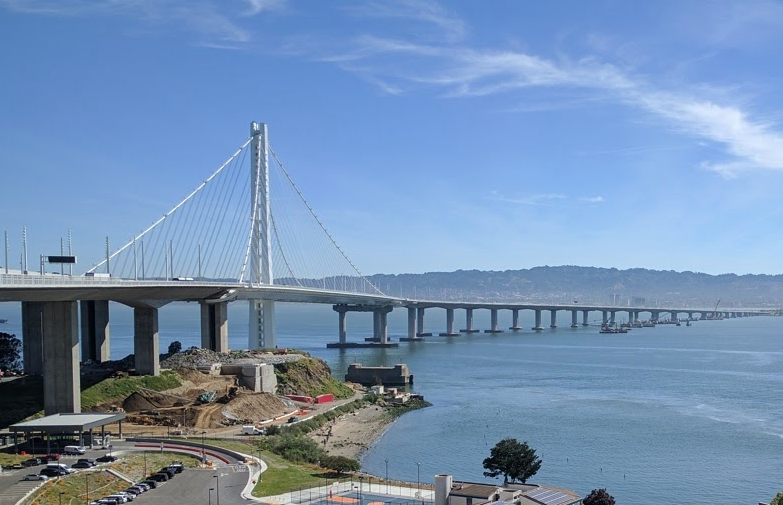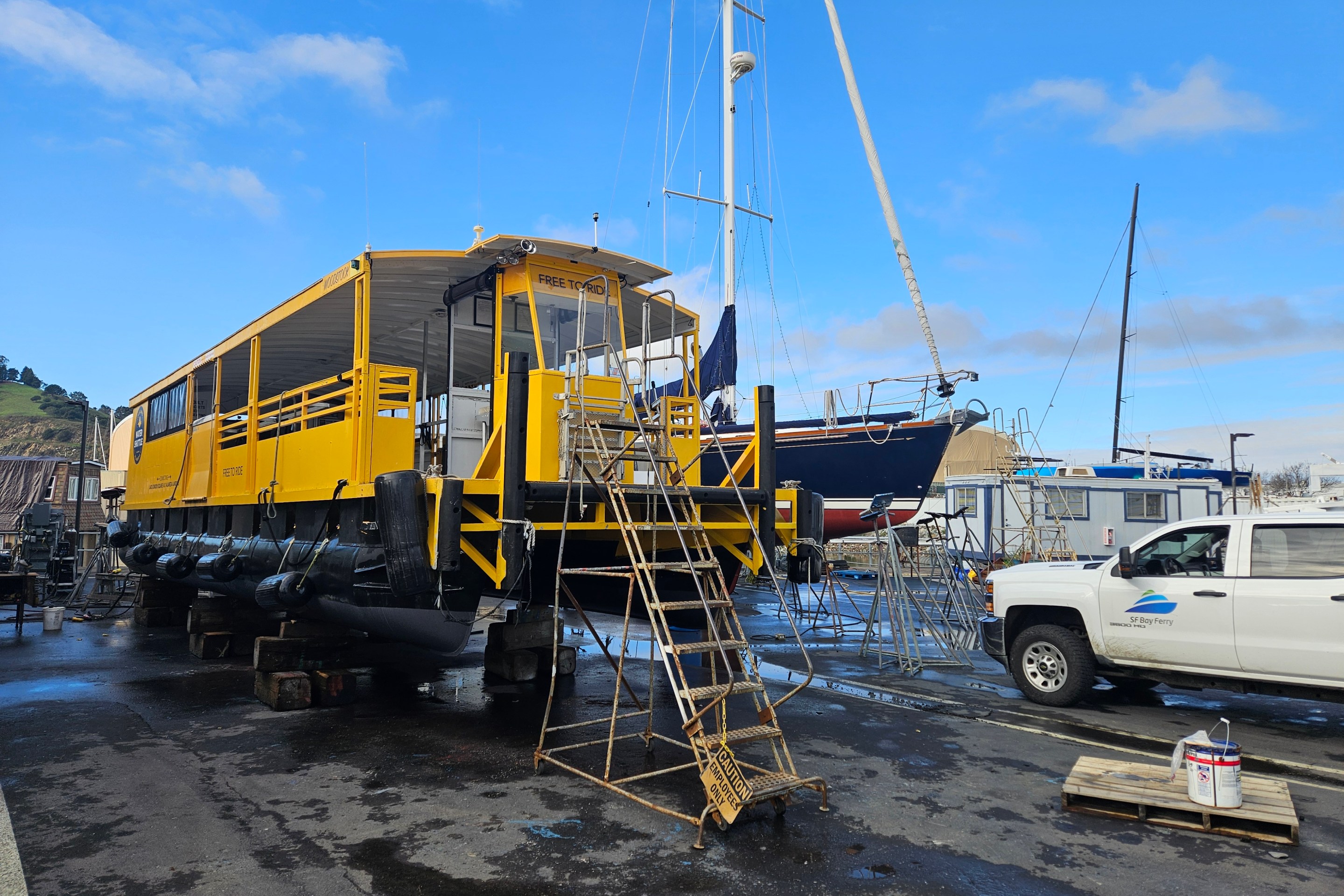Tammy Powers, who works in bicycle sales, commutes between Oakland and her business, Treasure Island's "A Tran's Bay Bike Shop." Normally, the trip, which she does by bike, takes a relaxing 45 minutes. "Now I’m forced to take my folding bike onto AC Transit and go into San Francisco and then commute back to Treasure Island on Muni," she explained.
That's because on Friday the San Francisco County Transportation Authority announced a six-month closure of the only remaining bike access between Treasure Island and the Oakland Bay Bridge.
Starting October 13, 2020 until April 2021 there will be no bicycle access on Macalla Road between the Bay Bridge and Treasure Island on weekdays. Vista Point remains open from sunrise to sunset during weekdays for bicyclists. @SFTIDA @MTCBATA https://t.co/maYND5PaEi
— San Francisco County Transportation Authority (@sfcta) October 9, 2020
Cyclists who live or work on Treasure Island are now effectively marooned. And since there's currently no public transportation directly between Oakland and Treasure Island, they are stuck either finding a ride with a motorist or doing Powers's wrong-way bus ride to downtown San Francisco, which adds an hour to her commute.
"There’s a lot of construction going on along Macalla Road, building condos, and lots of 'em," explained Bike East Bay's advocacy director, Dave Campbell.
Campbell got a tour of the situation Wednesday, to find out exactly why the SFCTA is maintaining motor-vehicle access, despite the construction, but has opted to cut off bikes except on weekends.
As promised, I met today with @sfcta to discuss on site the challenges of maintaining bike access on Yerba Buena Island over next 6 months of construction—there are a few. We made specific asks and look forward to @SFCTA’s prompt response. Update next week pic.twitter.com/5gAXR8ycF8
— Dave Campbell (@Derailluer) October 15, 2020
Streetsblog has also emailed the SFCTA for an explanation.
Update: Friday, Oct. 16. "The placement of utilities on Yerba Buena Island and Treasure Island is consistent with the layout of streets across the city and consistent with Caltrans standards. Regarding connections from Vista Point to Treasure Island, the Transportation Authority is looking into the possibility of restarting shuttle service between Yerba Buena Island's Vista Point and Treasure Island. That service was suspended when stay at home orders went into place in March," wrote SFCTA spokesperson Eric Young, in an email to Streetsblog.
The road access from the Oakland Bay Bridge bike path to Yuerba Buena and Treasure Island is complicated. But, according to Campbell, the core problem is that the bike path on Macalla is built on top of an underground utility corridor. To connect up the new housing developments, workers have to continually dig up that bike path to get to the conduit and piping as they connect up the new buildings. The plan is to cover the utility access holes on weekends so recreational cyclists can use it when work isn't underway.
One has to ask why planners put the bike route on a utility corridor in the first place; certainly, SFCTA and Caltrans would never construct a freeway in such a way that it had to be closed to cars completely every time workers needed to get to electric or water lines.
From the way Campbell explained it, the county's priority is to expand and "modernize" the motor-vehicle ramps between the bridge and the new developments. "These ramps they’re doing there, it’s just this Disneyland of new freeway ramps," he quipped.

New freeway ramp complexes are being built on both sides of the island, as part of the Southgate Road Realignment Project. The construction has blocked Hillcrest/Treasure Island Road, a route cyclists used to get between the bridge and the island before the Macalla bike path. "They’re spending at least $100 million on all of this stuff and they are also designing good bikeways, but they’re not funding them yet," he added. "How did these decisions get made and how were they made resulting in bike access being closed? We weren’t privy to any of those conversations. We were just told here’s the latest designs and, by the way, your bike path gets closed."
Of course, the massive hill of Yerba Buena island already makes for difficult cycling, at least without an electric pedal assist. But from Streetsblog's view SFCTA, if it's sincerely committed to reducing private car use, should be building things such as bike lifts and bike escalators and improving bike connections generally. That should be the priority, rather than building new freeway ramps. And, of course, they should be working on creating bike access on the Western Span of the bridge and speeding up the construction of the island's ferry terminal.
Instead, officials have once again pushed off bicycle improvements and prioritized private car use, with predictable results, such as creating Powers's now stressful and frustrating back-tracking bus commute. "Whatever work is being done to cause the bike lane to close should be performed during the lane's normal hours of closing--9 p.m. to 6 a.m. They think of solutions like that for car commuters all the time."
"They should give bicyclists the same respect as drivers," she added. "And they don’t shut bridges off to auto commuters."






